Description
The joy of fermented foods is that, as well as being good for your health, its contain very few processed ingredients when made of low-tech. Additionally, its diversify our diet by enriching it (in terms of flavour and nutrients).
Sommaire
Sommaire
- 1 Description
- 2 Sommaire
- 3 Introduction
- 4 Video d'introduction
- 5 Étape 1 - Hygiene rules
- 6 Étape 2 - Plant-based dairy products
- 7 Étape 3 - Replace the egg white with aquafaba (legumes)
- 8 Étape 4 - Vegetable steaks
- 9 Étape 5 - Vegetable stuffing, meatballs and sausages
- 10 Étape 6 - Cod brandade-style white bean gratin and fishless acras
- 11 Étape 7 - Imitation breaded fish or breaded escalopes
- 12 Étape 8 - Pâtés, rillettes and cakes in vegetable recipes (including imitation fish)
- 13 Étape 9 - Tartinade et médaillon imitation foie-gras
- 14 Étape 10 - Carottes fermentées imitation saumon fumé
- 15 Étape 11 - Sushis, makis et rouleaux de printemps sans poisson
- 16 Notes et références
- 17 Commentaires
Introduction
Fermented foods are foods that have been transformed by micro-organisms: bacteria, yeasts, mushrooms. This process often takes place without oxygen, in an anaerobic environment. Microbes normally multiply in the presence of oxygen. But when they are deprived of it, they fight back by producing molecules to gain an advantage over competing microbes: alcohol, lactic acid, acetic acid. This gives rise to various types of fermentation: lactic, alcoholic, acetic, etc. Although we sometimes tend to forget it, many everyday foods are in fact fermented: bread, cheese, yoghurt, sauerkraut, sausage, wine, beer... The list goes on. That's a good thing because their effects are beneficial to health !' They aid digestion, help the intestines to function properly, are sources of vitamins and minerals, and boost the immune system...
As Virginie Geres reminds us with her website HappyBiote, without micro-organisms we'd be dead! Quite simply! We couldn't function without the billions of bacteria, yeasts and other (non-pathogenic) microbes that line our bodies. They carry out important tasks such as protecting us from aggression from other (pathogenic) microbes, allowing us to eat, to have a distinct smell from other people (and therefore making it easier to fall in love when we're not too dirty), they participate in our immune system... And in each of our cells is a microorganism that we have incorporated over the millennia: the mitochondrion, which enables cellular respiration! Watch this super video to find out more.
So, not only are microorganisms necessary for our survival, but by providing a wide diversity of them through a healthy and varied diet (in particular with foods rich in fibre -prebiotics- and microorganisms -probiotics-) we improve our immune and mental health. This is the very opposite of modern occidental standards, which make people literally ill, among other things because of a weak microbiota. For more information I recommend this report from Arte, or this one a little older on the same theme.
All good reasons to eat them regularly (but be careful not to eat just that!).
Here are several recipes for no-waste fermented drinks, made from natural micro-organisms. Try out the making of these homemade sodas !
To find out more about fermentations, I invite you to look at, download and distribute the collection from the 2020 French summit on fermentations, which includes contributions from scientists, chefs and various recipes. You'll find it just below in the "Files" section of the tutorial.
The recipes proposed here are vegan (i.e. without animal proteins), but anyone can use them in their cooking to diversify their diet and seek out new culinary discoveries! The recipes chosen here aim to give you a visual and taste experience similar to that of dishes containing animal proteins. It's a choice that may make life easier for those around you (if they're non-vegan), but it also raises moral questions (why try to reproduce meat or cheese when it's not?) and often requires more effort than very good plant-based recipes (because the search for similarity is difficult to achieve depending on the raw materials used).
Youtube
Étape 1 - Hygiene rules
You don't have to work in a sterile field when it comes to fermentation, but it is crucial to be as clean as possible.
Work on a clean work surface (if necessary/possible sanitised with white vinegar or alcohol). Use clean utensils and containers, washed in hot water (or put in the dishwasher), handle with clean hands and wipe with a CLEAN tea towel... of course.
Étape 2 - Plant-based dairy products
For the section on vegetable cheeses, another very complete tutorial is available on the wiki. Feel free to read it and try out the recipes.
Fermented foods - vegetable milk kefir and vegan cheeses
If you prefer to buy plant-based cheese, I'd recommend the brand Jay & Joy, an artisanal, organic, French, soy-free plant-based dairy. Their products can be found in Biocoop shops. They have mature cheeses such as Camembert, Bleu, buche de chèvre... that are really impressive!
Étape 3 - Replace the egg white with aquafaba (legumes)
It's very common to find aquafaba in vegetarian and vegan recipes as a replacement for egg white. This is because the cooking water from certain legumes (chickpeas, kidney beans) has the same viscosity and can be whisked like conventional egg whites. This cooking water is made up of around 90% water and 10% protein and fibre. It's virtually the same composition as egg white, which explains why when you mix the chickpea cooking juices briskly with an electric mixer, you get a froth that's virtually identical to that of stiffly beaten egg whites.
.
Recipe:
- Soak the dried chickpeas or kidney beans in water for at least 12 hours.
- Discard the soaking water
- Put the seeds in a saucepan and cover with water. Do not add salt. Cook at a gentle simmer for 1 hour, stirring occasionally.
- Drain the pulses and keep the cooking water. Once cooled, the liquid will become slightly cloudy and viscous - your aquafaba is ready!
- Storage: keep in an airtight bottle or jar in the fridge for between 2 and 8 days. As soon as the smell becomes strong (slightly fishy), throw it out. Aquafaba also freezes well. Ideal in an ice-cube tray for use in small quantities.
- Uses: 3 tablespoons of aquafaba replaces one egg white.
Example of use
- chocolate mousse: simply aquafaba beaten until sniff incorporated into melted chocolate with a little oil (or vegetable cream).
- Floating islands: sweetened aquafaba whipped up and then steamed.
- meringue: same as above but baked in the oven
- as ice cream and sorbet to replace the creaminess given by the addition of egg white (frozen fruit, same weight in sugar, 1 egg white/3 tablespoons of aquafaba). For ice cream you can use vegetable milk + aquafaba or for desserts that tend to freeze (chocolate), mix a little courgette with it to keep the creaminess.
- Marshmallows from Seitan is my Motor.
- in mayonaise with or without tofu
Étape 4 - Vegetable steaks
Ah veggie steaks... It's a whole story, and there are lots of possible recipes to avoid the ultra-processed meat-based versions found in supermarkets!
Depending on your tastes and your desire to have a dish that resembles an animal steak, you have several possibilities. Here are several examples that can be mixed together to give the texture, taste and visual appearance you prefer.
Tofu steaks (soy or hemp)
If you like soy (or hemp tofu) you can make your own at home in a low-tech way thanks to this tutorial.
You can grill a slab of tofu, bread it and/or fry it, or chop it into small pieces to give the impression that it's a piece of chicken, or mince it finely to give the impression of minced meat. The full range of lacto-fermented vegetables and other ferments can be used in addition to spices/aromats to adjust colour and flavour. Tofu is an easy replacement for commercially available textured soya protein (TSP), which is often used to mimic meat in vegan/vegetarian ready meals.
Seitan steaks (wheat or gluten-free)
Seitan is a Japanese speciality that has been eaten for centuries as a substitute for meat (in particular as a substitute for pork or chicken for Buddhist monks). It is nicknamed ‘wheat meat’ because it is so rich in protein. All you need is wheat flour, water, stock (traditionally kombu seaweed) and soy sauce to make it yourself in a low-tech way. You can find the recipe on this tutorial. What gives seitan its elastic/spongy texture comes mainly from the wheat gluten, but it is possible to use other flours to avoid gluten.
Like tofu, seitan can be cut and seasoned however you like to make it a meat substitute. You can grill a piece of seitan, bread it and/or fry it or cut it into small pieces to give the impression that they are pieces of chicken or chop it finely to give the impression of minced meat.
Vegetable steak with tempeh
Tempeh is traditionally made from yellow soya beans, but it is possible to use other beans (lupins, almonds, kidney beans, maize, chickpeas, etc.). For example, it can be made from okara (filtered pulp not used in vegetable milks).
Tempeh has a flavour reminiscent of mushrooms, nuts and yeast. You can grill a piece of tempeh, bread it and/or fry it, or chop it into small pieces to give the impression that it's a piece of chicken, or mince it finely to give the impression of minced meat.
It is rich in vegetable protein but its visual appearance and strong flavour can make it difficult to use on its own as a meat substitute. So don't hesitate to mix it with other recipes and flavour it.
Click here to see the tutorial on different tempeh recipes.
Vegetable steak from fermented polentas
It is perfectly possible to ferment polenta. Traditionally, polenta is made from corn, but it can also be made from seeds that have not been finely chopped, such as chickpeas, wheat (finer than bulgur), millet, etc. To ferment them, simply soak them in water or a brine (lacto-fermentation, for example) for 48 hours, which develops a tangy flavour and a magnificent crust when pan-fried. The advantage of polentas is that as they cook, the texture can become very thick and you can give them any shape you like. It can be flavoured with whatever you like to give it the right taste, and to give it a meat-like colour you can add a little beetroot juice (why not in the fermentation water).
Rosties-type vegetable steak
Rosties are traditionally raw potatoes, grated and mixed with cheese. To adapt it to your own tastes, you can use vegetable cheeses (see the other tutorial to make them yourself), lacto-ferment the potatoes before grating them (in a 3% salt brine for 48 hours) and add onions, garlic, vegetables such as courgette (for extra softness)... Lacto-fermented vegetables to spice up the flavour and spices/aromats. You'll often find the combination of brewer's yeast, miso and tamari in recipes.
Vegetarian steak with legumes
The combination of red beans and egg whites (which can be replaced by aquafaba) is often used to imitate meat steaks. The disadvantage of this recipe is that the result is often a dry steak with little flavour. To avoid this problem, I recommend (obviously) fermenting your pulses, adding a little dosas or sourdough (to give a binding agent) and adding vegetables (lacto-fermented? e.g. beetroot/carrot). Adding beetroot or red cabbage will give an even darker colour if you like the trompe-l'oeil effect.
Once the vegetables have fermented, you can steam or boil them and then mash them lightly to make a lumpy purée, to which you add the other ingredients before forming cobblestones and cooking them in a pan.
Vegetarian steak tartare
If you would like to recreate a vegetarian version of steak tartare, you can take inspiration from the recipes above by adding a little vegetable (beetroot, for example) (part of which is lacto-fermented to give it acidity, and by flavouring the lacto-fermentation the explosion of flavours in the mouth is incredible! Adding vegetables to the legumes (such as kidney beans, for example) gives the steak tartare its softness and moisture. Then you're free to flavour it as you would an animal tartare: add shallots, gherkins, capers (you can make capers from any edible flower bud!). To give your tartare a nice shape, don't hesitate to use a cutter or a bowl and if necessary add a little sauce (e.g. homemade fermented ketchup or mayonnaise, vinaigrette...).
Étape 5 - Vegetable stuffing, meatballs and sausages
There are lots of ways to replace meat stuffing, depending on how much you want it to look like the classic dish. It's very easy to replace meat with cereals, oilseeds or cooked (or even fermented beforehand) pulses with a more or less fine texture to form the stuffing.
You can use the same recipes to make veggie steaks and shape them into meatballs.
For the sausages, depending on the result you want (fine or grainy texture) you can use one of the previous recipes on the steaks and shape them into sausages. Tofu or seitan will give a fine texture, the others will depend on how finely you blend them. For a chorizo-style flavour, don't hesitate to add chilli and red pepper/paprika to your preparations.
The fermented falafel recipe in this tutorial works very well: Fermented foods - dosas, vegan crêpes
You can also simply mix bulgur, lentils and other ‘seeds’ with spices, mushrooms and other vegetables. With or without a fermented sauce (which tastes more like meat or fish), the result is very healthy and delicious!
Another tip: for an incredible smoky flavour, grilled aubergines (or better still, NiCruNiCuit's lacto-fermented aubergine caviar) are just perfect!
Étape 6 - Cod brandade-style white bean gratin and fishless acras
Here's a recipe that's a cousin of Ferment'Nation's, made with red beans. It's Brazilian and often replaces cod acras: https://www.instagram.com/p/CFZ6q1cIcru/
For the cod brandade gratin, you can use the same recipe as for the dumplings, but with a few changes. You can ferment white beans (to keep a creamy white colour, use lacto-fermented vegetables to enhance the flavour. To give the cod a fibrous appearance, some people use palm heart, which could be replaced by bamboo shoots or any other lightly fibrous vegetable produced locally (e.g. asparagus, more fragrant fennel).
Étape 7 - Imitation breaded fish or breaded escalopes
To imitate breaded meat or fish, you can use a steak recipe and roll it in vegetable milk or aquafaba, then wrap it in breadcrumbs and cook it. Adding beer yeast flakes to the breadcrumbs enhances the taste.
For the fish in particular, if you want a taste of iodine, you can marinate the ‘steak’ a little in a preparation of lemon juice and seaweed. Mimagusta's recipe presents a video using breaded celeri rabe resctangles.
Étape 8 - Pâtés, rillettes and cakes in vegetable recipes (including imitation fish)
Lacto-fermented autumn pâté by Ferment'Nation with sunflower seeds, peppers, sun-dried tomatoes, tamari and lacto-fermented courgettes. (Photo)
Lacto-fermented pâté with courgette, apples, walnuts and sunflower seeds by Ferment'Nation.
Lentil pie with tofu and mushrooms by La Fée Stéphanie
For a pâté spread with similar ingredients you can blend the first recipe more finely or read the adaptation of this one, again by La Fée Stéphanie.
Imitation seafood terrine (with seaweed) By Delphine from Geek&Balsamique. If you don't want to use soya, you can farbic hemp tofu or replace the tofu with puréed pulses (e.g. chickpeas, white or kidney beans) and use vegetable yoghurt as a binder or the recipe for homemade vegan mayonaise described in this tutorial.
Vegan imitation tarama spread with tofu and plant-based yoghurt by Delphine from Geek&Balsamique.
Pour servir façon cake/terrines-gelées en plat principal il suffit d'augmenter les quantités et ajouter peut-être de l'agar-agar afin de solidifier le "cake". Pour des cake/terrines imitation poisson ou fruits de mer vous pouvez utiliser des lentilles corail et du concentré de tomate jusqu'à avoir la couleur et la texture désirée. Utiliser du miso, du tofu fumé, du paprika fumé ou des aubergines lactofermentées permet de renforcer l'arôme de fumé.
Si vous avez la chance d'avoir la plante au gout d'huitre à portée de main (Mertensia marine) n'hésitez pas à l'utiliser pour remplacer les algues ou à l'ajouter pour avoir un gout encore plus proche.
Si vous délayez un peu vos pâtés, cela vous donnera d'excellentes soupes, notamment imitation soupes de poisson. Puisque la préparation est diluée n'hésitez pas à plus fortement doser les épices et les algues.
Étape 9 - Tartinade et médaillon imitation foie-gras
Voici la recette fermentée d'une amie, Pauline Cueto
- 150g de champignons de Paris
- 200g de tofu soyeux
- 200g de tofu fumé (ce qui donne la saveur)
- 100g de noix de cajou (ou autres noix mais la cajou est très onctueuse)
- 100ml d'eau
- 150 ml de vin blanc sec
- 1 gousse d'ail
- 2 cuillère à soupe d'huile d'olive (ou de coco pour l'effet figé médaillon)
- 3 cuillèes à café de miso blond
- 1 cuillère à café de moutarde
- 1 cuillère à café de sauce soja
- 1 cuillère à café de vinaigre de cidre
- 2 pincées de 4 épices
- 3 brins de thym
- 1 cuillère à café d'agar-agar
Faire tremper les noix de cajou dans l'eau et le vin pendant quelques heures. Egoutter. Mixer les noix avec tous les autres ingrédients. Diluer l'agar-agar dans le vin et faire chauffer afin d'avoir un liquide homogène. Ajouter au reste du mélange et mixer à nouveau.
Verser dans des verrines et placer au frais.
Astuces :
- Pour imiter la couche de gras à la surface du foie-gras vous pouvez faire fondre un peu d'huile de coco avec une pointe de curcuma pour la couleur et la faire solidifier lors du passage au frigo.
- Pour obtenir des médaillons tranchés vous pouvez démouler la verrine (la taille d'un pot de confiture) et la trancher. Si la texture est trop moeleuse pour rester compacte alors vous pouvez remplacer l'huile d'olive de la recette par de la coco ou bien augmenter légèrement la dose d'agar-agar.
(c) Photos de Consommons Sainement présentant sa réalisation de la recette de La Petite Okara
Voici une autre recette de La Fée Stéphanie qui adapate la recette de Sébastien Kardinal (vidéo), en utilisant notamment de l'huile d'olive parfumée à la truffe.
Étape 10 - Carottes fermentées imitation saumon fumé
Recette de ShiraBio en 10 minutes (puis 48h). Voici la vidéo de la recette complète spécial fêtes de Noël.
Étape 11 - Sushis, makis et rouleaux de printemps sans poisson
Comme les carottes fermentées il est possible de remplacer les poissons par différents légumes et fromages/protéines végétales. Pour les rouleaux de printemps vous pouvez utiliser ces substitus pour remplacer les crevettes ou le poisson.
Vous pouvez donc essayer les combinaisons ci-dessous pour vous lancer puis imaginer vos propres "sushis végétaux"
- Carottes aux algues, paprika fumé, tamari et umeboshi pour imiter le saumon
- Tomates, betterave ou poivrons rouges avec la même préparation pour imiter le thon rouge (ou avec un peu de miso)
- Utiliser du tofu ou bien des poireaux, navets pour imiter des poissons plus blancs
- Utiliser du pâté végétal pour imiter les maki de thon cuit (ex: voir plus haut les tartinade imitation tarama)
- De l'aquafaba pour imiter les sushis à l'omelette
Si vous n'avez pas le temps de les faire fermenter, vous pouvez utiliser des sauces asiatiques du commerce et les faire mariner 24-48h à l'avance.
Bien sur il existe aussi une grande variété de sushis et makis aux légumes. Par exemple les classiques au concombre, avocat, mais amusez-vous aussi à varier les couleurs, textures et gouts en utilisant des carottes, du choux rouge... lactofermenté? Un délice!
Et pour les makis francisés contenant du fromage? Utilisez des recettes de fromage vegan, le tutoriel est par ici.
Notes et références
Pour plus d'inspirations de recettes et des cours de fermentations n'hésitez pas à suivre ShiraBio, Ferment'Nation et à explorer l'incroyable site (et livres) de Marie-Claire Frédéric, anthropologue et cheffe de cuisine fascinée par les fermentations du monde : Ni cru ni cuit
Il existe d'ailleurs plusieurs groupes facebook de passionnés de fermentations, je vous recommande ceux-ci
- Fermentation maison fondé par Ferment'Nation
- Lactofermentation et conserves naturelles, spécifiquement axé sur les lactofermentations
Si vous êtes à la recherche de livres de références pour apprendre les arts de la fermentation, Sébastien alias Ferment'Nation propose dans ce post du groupe Fermentation Maison une compilation expliquée des meilleurs livres qu'il a testé. Il y en a des spécifiques (sur les lactofermentations, les fromages) et d'autres généralistes. De quoi vous inspirer!
Pour retrouver de nombreuses recettes, ferments et outils pour fermenter à la maison voici le site de l'entreprise Fairment, organisatrice du Sommet sur les fermentations : https://fairment.com et celle plutôt du continent Américain, Révolution Fermentation : https://shop.revolutionfermentation.ca/
D'autres références incontournables sont dans les premières pages du fichier joint à ce tutoriel.
Si vous souhaitez voir plus de tutoriels sur les fermentations n'hésitez pas à regarder :
- Conserves lactofermentées
- Aliments fermentés - fermentations de fruits
- Boissons fermentées - Sodas maison
- Boissons fermentées - Sodas à base de fleurs
- Boissons fermentées - Kéfir, kombucha et vinaigres
- Boissons fermentées - Hydromels
- Aliments fermentés - produits laitiers animaux maison
- Aliments fermentés - kéfir de laits végétaux et fromages vegan
- Aliments fermentés - levains et pains
- Aliments fermentés - fermentations asiatiques de céréales, légumineuses et variations
- Aliments fermentés - festival de sauces
- Aliments fermentés - alternatives aux protéines animales
Published
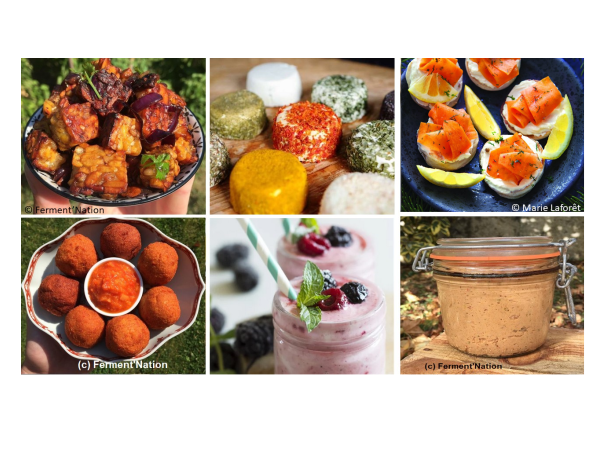
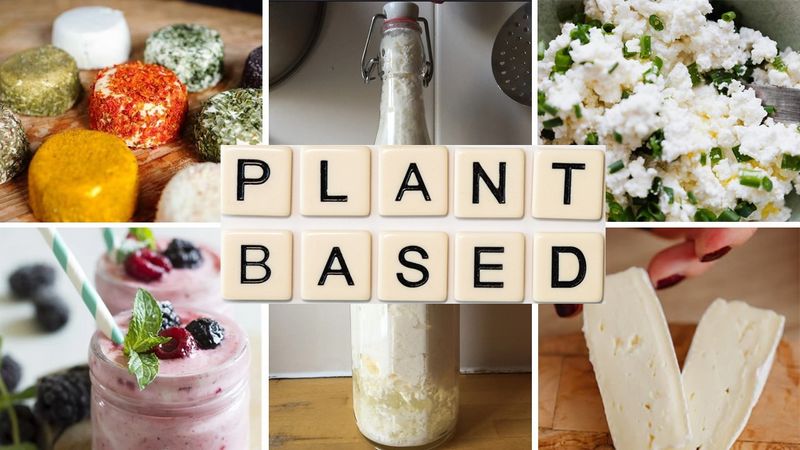
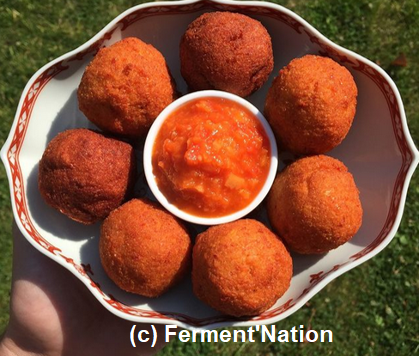
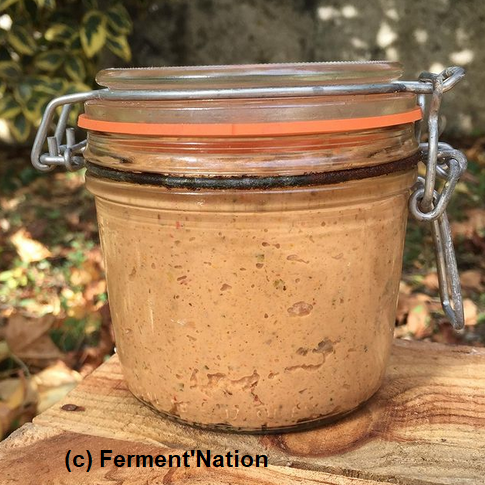
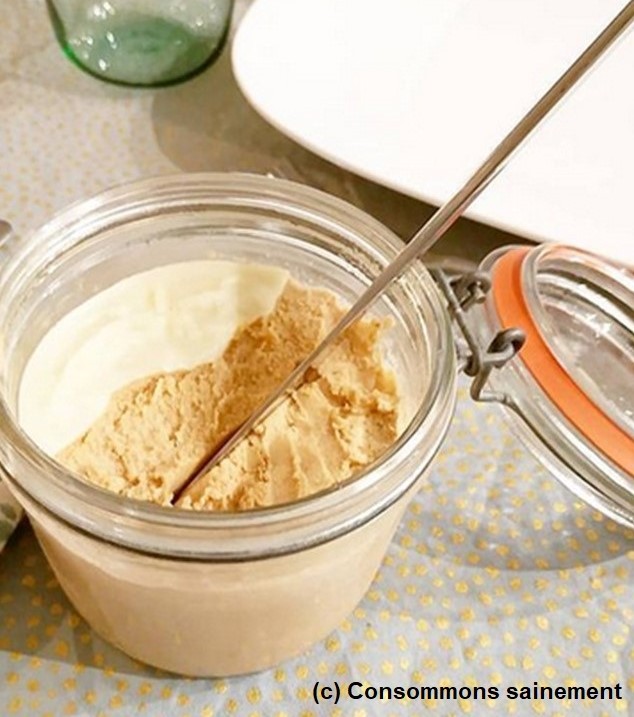
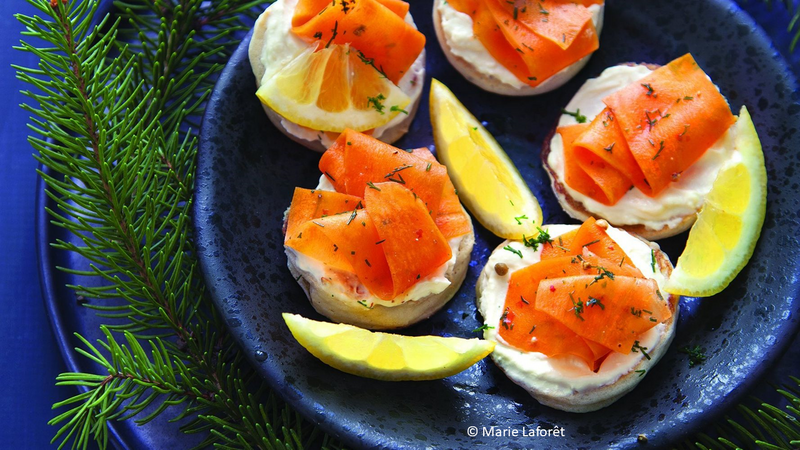
 Français
Français English
English Deutsch
Deutsch Español
Español Italiano
Italiano Português
Português